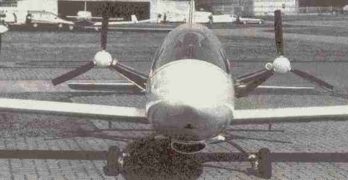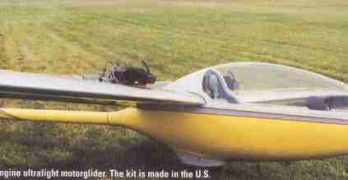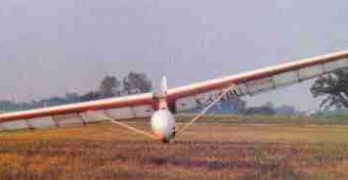Dockweiler Beach renews hang gliding memories.
Most KITPLANES readers probably don’t think of hang glider pilots as old folks. Indeed, it remains a younger man’s flying sport due to the athletic nature of the launch and landing. (At least that’s true if you don’t count the 30-40% of all launches that are done via aerotowing behind a specially built ultralight.)
Nonetheless, this event at a famed California beach site was dubbed the Geezer Fly-In by many who celebrated in good humor at the landmark where so many first got their feet off the ground under a hang glider. Many of those present qualify as fifty somethings.
“Nearly 400 pilots attended,” says Michael Riggs, himself a figurehead in the early days of hang gliding. Riggs started Seagull Aircraft, which became highly successful selling thousands of his distinctive hang gliders with the smoothly curved leading edges.
He also described the event this way: “There wasn’t a dry eye all day.” Of the hundreds who gathered, many had not seen each another in the last 20 years.
Search Results for : Flight Design
Not finding exactly what you expected? Try our advanced search option.
Select a manufacturer to go straight to all our content about that manufacturer.
Select an aircraft model to go straight to all our content about that model.
Hang Gliding Records
What’s in a name? A Texas-based event, last summer’s World Record Encampment, predicted accurately its own success; two top hang glider pilots set world records for distance flying and broke another record that stood for nearly a decade.
On July 19, Dave Sharp flew his A.I.R. ATOS rigid wing hang glider for an astounding 311 miles (501 kilometers), narrowly beating the long-held record of 308 miles set by another leading competitor, Larry Tudor.
Tudor first broke the magical 300-mile barrier by flying 303 miles in July, 1990. He repeated this achievement, flying 308 miles several years later, but nearly a decade passed with no other pilots exceeding 300 miles. That unique status was shattered thanks to participants at the World Record Encampment 2000.
Sharp flew more than 9 hours to earn his world record. The one that people will remember is the 311-mile flight of straight distance, but along the way he also set a record for a flight to a declared goal of 203 miles.
FK-11
Let’s check out the FK-11 ultralight.
How would you like to own a Mercedes-brand ultralight? Today you can’t, and maybe you will never be able to, but you may be able to purchase a slick little ultralight called the FK-11 that is well known to Mercedes. And if you want a Mercedes-powered ultralight today, one is being sold.
This month’s “Light Stuff” again ventures across the Atlantic to look at another fascinating aircraft coming from the European sport aircraft community. The pictures accompanying this column feature the FK-11, a prototype design from Otto Funk, lead designer for the German ultralight manufacturer, B&F Technik Vertriebs.
B&F is what Americans might call a family operation. Son Peter Funk runs the business. Otto is his father, who owns an engineering firm and works with Peter as B&F’s design team. Before starting his own enterprise, Otto was an engineer working for Airbus.
Twin-Prop FK-11
The FK-11 is a single-engine ultralight using two aft-mounted props that extend from the fuselage midsection on upward-angled supports.
Esprit
Meet the Esprit – a twin-engine ultralight motorglider.
Soaring enthusiasts who want to self-launch their aircraft are limited to simple hang gliders on one end and expensive motorgliders on the other. Performance for these machines ranges 15:1 to 50:1. To get one you’ll spend $5000 or $200,000. What you could not do is spend $20,000 to get medium performance*… until now.
Debuting his machine at AirVenture 2000 airshow, Dobro Hajek brings a modern soaring aircraft to the ultralight community. I believe he will also find significant interest from two other groups: sailplane and hang glider pilots. Each loves dedicated machines without engines but many will also prefer an aircraft that can launch itself.
Welcome, Esprit
With its distinctive compound-tapered wings and winglets and its dual engines with folding props, the sleek Esprit goes a long way past the Aero Dovron that Hajek (pronounced HAY-yek) once imported. The Straton D-8 was an interesting little motorglider with a high wing and struts but at 17:1, this inexpensive machine didn’t have the go power it needed to attract a solid market in the United States.
Marske Sailplanes
The Marske Monarch continues to offer economical soaring.
Ultralight sailplanes. Are they a new category of aviation, a segment of ultralight aircraft or just little sailplanes? Though ultralights seem to be some of the newer aircraft in general aviation, their true lineage is based on soaring machines.
For example, the first and still most successful ultralights, the Quicksilver series, came from a hang glider design to which a small engine was added back in the 1970s. Trikes, which have continued to grow in worldwide popularity, are based on delta-wing hang gliders to which power and landing gear were added. Therefore, though the term may be relatively new (going back a decade or so), the aircraft has a longer heritage. One shining example of this is Jim Marske’s Monarch.
New Model, Old Design
Marske has been building the Monarch for 20 years and has added his higher performance model, the Pioneer, to his list of designs spanning 40 years.




